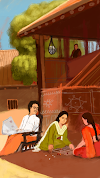40 Essential Tips for a Safe Night Drive
Night driving can be both thrilling and challenging. Here are 40 detailed tips to ensure a safe, enjoyable, and smooth night journey, from preparation to reaching home.
Preparation Before the Trip
1. Plan Your Route
Research your route in advance, including rest stops, fuel stations, and potential hazards. Use GPS or a reliable map as a backup.
2. Schedule Enough Sleep
Ensure you are well-rested before the journey. Driving at night requires more focus, so avoid starting tired.
3. Inspect Your Car
Check tire pressure, fluid levels, headlights, and brake lights. Ensure your vehicle is in top condition for the drive.
4. Prepare an Emergency Kit
Include essentials like a flashlight, first aid kit, extra batteries, jumper cables, and a basic tool kit.
5. Charge Your Phone and Devices
Make sure your phone, GPS, and any other essential devices are fully charged before starting.
6. Bring Snacks and Water
Pack light snacks and plenty of water to stay hydrated and keep your energy up during the trip.
7. Plan for Breaks
Decide on scheduled stops to stretch, rest, and freshen up, especially if you’re driving solo.
8. Inform Someone of Your Trip
Share your route and estimated arrival time with someone you trust in case of emergencies.
9. Set Up Emergency Contacts
Keep emergency numbers saved in your phone and consider an emergency roadside assistance service.
10. Prepare Entertainment
Create a playlist or download audiobooks to keep you entertained and alert without getting bored.
On the Road: Safety and Comfort
11. Avoid Overloading the Car
Keep your vehicle light to ensure better control and fuel efficiency. Avoid stacking too much luggage on top.
12. Use Low Beams for Street-Lit Roads
Use low beams in well-lit areas to avoid blinding oncoming drivers and improving visibility.
13. Maintain a Safe Speed
Stay within the speed limit and adjust your speed according to visibility and road conditions.
14. Watch for Wildlife
Be cautious in rural areas where animals might cross the road unexpectedly at night.
15. Limit Distractions
Avoid fiddling with gadgets, eating, or any activities that take your eyes off the road.
16. Avoid Heavy Meals
Heavy meals can make you feel drowsy. Stick to lighter, protein-rich snacks instead.
17. Use Cruise Control Wisely
Use cruise control in open, safe areas, but avoid it on curvy, mountainous, or busy roads.
18. Take Short Breaks Every 2 Hours
Stretch, walk around, and refresh yourself to stay alert, especially during a long drive.
19. Avoid Alcohol and Caffeine Excess
Stay away from alcohol before the drive. Be cautious with caffeine, as too much can cause jitters or a crash later.
20. Dim Dashboard Lights
Dimming dashboard lights reduces glare and helps keep your eyes on the road.
21. Use Sunglasses for Oncoming Glare
If you experience glare from oncoming headlights, consider wearing polarized sunglasses at night.
22. Check for Traffic Updates
Stay updated on traffic and road conditions through apps to avoid delays and plan detours if needed.
23. Avoid Driving When You’re Feeling Sleepy
If you start feeling drowsy, stop at a safe place, take a short nap, or do some stretching exercises.
24. Use High Beams Carefully
Use high beams in dark areas without oncoming traffic to improve visibility, but turn them off when others are nearby.
25. Keep the Windshield Clean
A clean windshield prevents glare and improves visibility, so regularly clean it during the journey if needed.
26. Keep Your Eyes Moving
Regularly check mirrors, road signs, and surroundings to stay fully aware of the environment.
27. Avoid Sudden Braking
Brake smoothly and steadily, as sudden braking can be dangerous, especially in low-visibility conditions.
28. Keep Your Distance
Maintain extra distance from the car in front of you, as visibility is limited and reaction time is critical at night.
29. Monitor the Rearview Mirror
Check your rearview mirror frequently to stay aware of other vehicles, especially those coming up from behind.
30. Watch for Reflective Markers
Follow reflective markers on the road to stay within lanes and avoid drifting on dark roads.
Post-Trip: After Reaching Your Destination
31. Unwind Before Unloading
Take a moment to stretch and unwind before unloading your car. This helps you transition safely out of driving mode.
32. Check for Any Leftover Food or Drinks
Remove any food or drinks from the car to prevent odors and keep the car clean for your next drive.
33. Lock Up and Secure Your Car
Once you’ve parked, double-check to ensure the car is locked and secure, especially if parked overnight.
34. Inspect for Any Damage
Quickly check your car for any signs of damage or issues that may have arisen during the drive.
35. Clean Up Trash
Remove any trash or personal items from the car to keep it tidy and ready for future trips.
36. Refill the Gas Tank
If feasible, refuel after your trip to ensure the car is ready for the next drive without delay.
37. Plug in Your Phone for Charging
Charge your phone and any devices that you used during the trip to ensure they're ready for use again.
38. Note Any Maintenance Needs
Make a list of any maintenance tasks you noticed, like brake checks or oil top-ups, for follow-up care.
39. Record Trip Details
For long-distance travelers, it’s helpful to record mileage, route challenges, and observations for future reference.
40. Take Time to Rest
After a long night drive, give yourself time to rest and recover, especially if it was a challenging journey.
Conclusion
Following these 40 tips can make your night driving experience safer and more enjoyable. Proper planning, awareness on the road, and post-trip care ensure a smooth and memorable journey from start to finish.















0 Comments